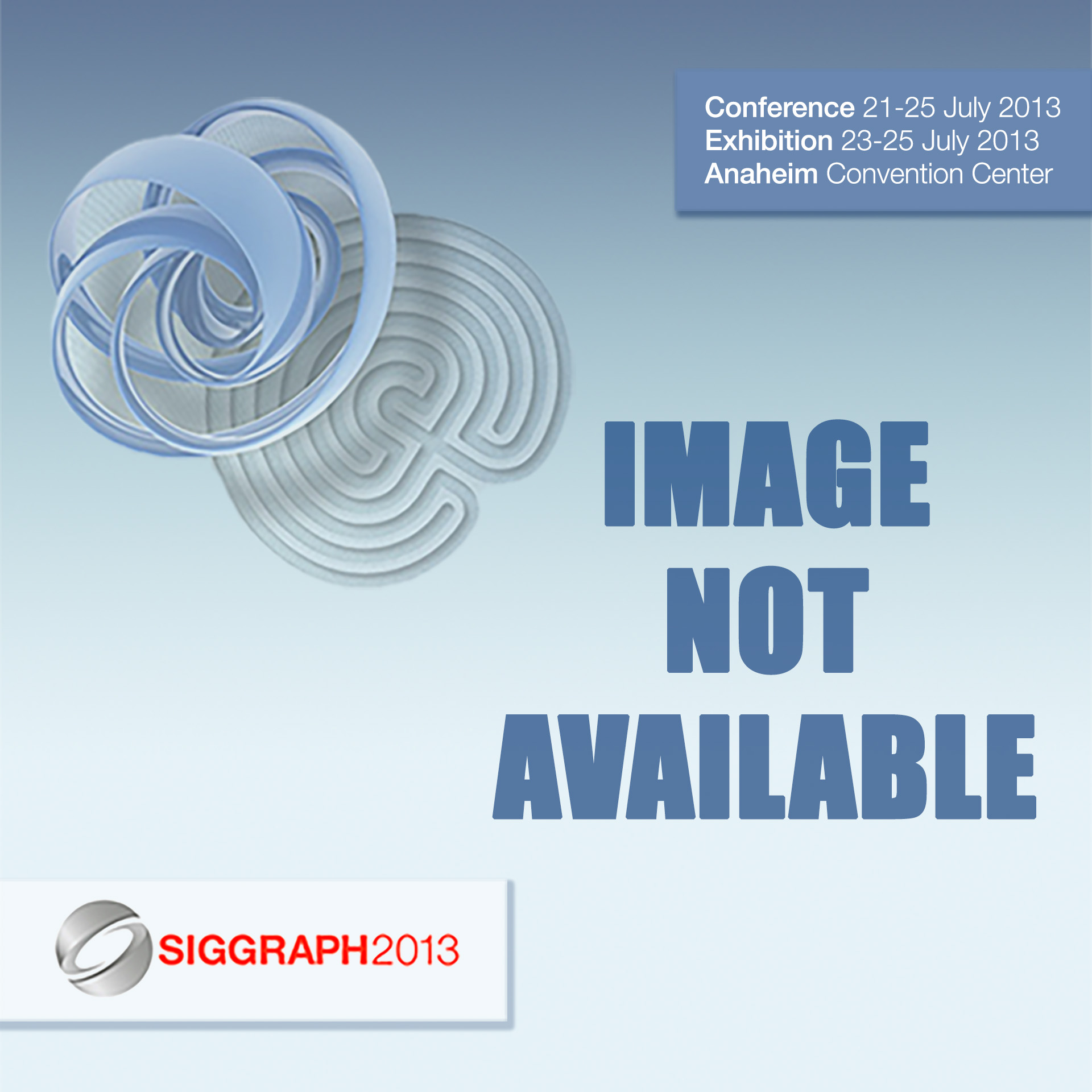“Analytic Displacement Mapping Using Hardware Tessellation” by Nießner and Loop
Conference:
Type(s):
Title:
- Analytic Displacement Mapping Using Hardware Tessellation
Session/Category Title: Hardware Rendering
Presenter(s)/Author(s):
Moderator(s):
Abstract:
Displacement mapping is ideal for modern GPUs since it enables high-frequency geometric surface detail on models with low memory I/O. However, problems such as texture seams, normal recomputation, and undersampling artifacts have limited its adoption. We provide a comprehensive solution to these problems by introducing a smooth analytic displacement function. Coefficients are stored in a GPU-friendly tile-based texture format, and a multiresolution mip hierarchy of this function is formed. We propose a novel level-of-detail scheme by computing per-vertex adaptive tessellation factors and select the appropriate prefiltered mip levels of the displacement function. Our method obviates the need for a precomputed normal map since normals are directly derived from the displacements. Thus, we are able to perform authoring and rendering simultaneously without typical displacement map extraction from a dense triangle mesh. This not only is more flexible than the traditional combination of discrete displacements and normal maps, but also provides faster runtime due to reduced memory I/O.
References:
- Bertram, M. 2004. Lifting biorthogonal b-spline wavelets. In Geometric Modeling for Scientific Visualization, Springer, 153–169.
- Blinn, J. 1978. Simulation of wrinkled surfaces. ACM SIGGRAPH Comput. Graph. 12. 286–292.
- Bunnell, M. 2005. Adaptive tessellation of subdivision surfaces with displacement mapping. GPU Gems 2, 109–122.
- Burley, B. and Lacewell, D. 2008. Ptex: Per-face texture mapping for production rendering. Comput. Graph. Forum 27, 1155–1164.
- Catmull, E. and Clark, J. 1978. Recursively generated B-spline surfaces on arbitrary topological meshes. Comput.-Aided Des. 10, 6, 350–355.
- Cook, R. 1984. Shade trees. In Proceedings of the 11th Annual Conference on Computer Graphics and Interactive Techniques Computer Graphics (SIGGRAPH’84).
- Do Carmo, M. 1976. Differential Geometry of Curves and Surfaces. Vol. 1, Prentice-Hall.
- Doo, D. 1978. A subdivision algorithm for smoothing down irregularly shaped polyhedrons. In Proceedings of the International Conference on Interactive Techniques in Computer Aidied Design. IEEE, 157–165.
- Gonzalez, F. and Patow, G. 2009. Continuity mapping for multi-chart textures. ACM Trans. Graph. 28, 109.
- Guskov, I., Vidimče, K., Sweldens, W., and Schröder, P. 2000. Normal meshes. In Proceedings of the 27th Annual Conference on Computer Graphics (SIGGRAPH’00). ACMPress/Addison-Wesley Publishing Co., 95–102.
- Halstead, M., Kass, M., and Derose, T. 1993. Efficient, fair interpolation using catmull-clark surfaces. In Proceedings of the 20th Annual Conference on Computer Graphics and Interactive Techniques. ACM Press, New York, 35–44.
- Lee, A., Moreton, H., and Hoppe, H. 2000. Displaced subdivision surfaces. In Proceedings of the 27th Annual Conference on Computer Graphics (SIGGRAPH’00). ACM Press/Addison-Wesley Publishing Co., 85–94.
- Loop, C. 1987. Smooth subdivision surfaces based on triangles. M.S. thesis, University of Utah.
- Loop, C., Schaefer, S., Ni, T., and Castano, I. 2009. Approximating subdivision surfaces with gregory patches for hardware tessellation. ACM Trans. Graph. 28, 5.
- Myles, A., Ni, T., and Peters, J. 2008. Fast parallel construction of smooth surfaces from meshes with tri/quad/pent facets. Comput. Graph. Forum 27, 5, 1365–1372.
- Niessner, M., Loop, C., Meyer, M., and Derose, T. 2012. Featureadaptive gpu rendering of catmull-clark subdivision surfaces. ACM Trans. Graph. 31, 1, 6.
- Patney, A., Ebeida, M., and Owens, J. 2009. Parallel view-dependent tessellation of catmull-clark subdivision surfaces. In Proceedings of the Conference on High Performance Graphics. ACM Press, New York, 99–108.
- Purnomo, B., Cohen, J., and Kumar, S. 2004. Seamless texture atlases. In Proceedings of the Eurographics/ACM SIGGRAPH Symposium on Geometry Processing. ACM Press, New York, 65–74.
- Ray, N., Nivoliers, V., Lefebvre, S., and Levy, B. 2010. Invisible seams. Comput. Graph. Forum 29, 1489–1496.
- Reif, U. 1997. A refineable space of smooth spline surfaces of arbitrary topological genus. J. Approx. Theory 90, 2, 174–199.
- Sander, P., Wood, Z., Gortler, S., Snyder, J., and Hoppe, H. 2003. Multi-chart geometry images. In Proceedings of the Eurographics/ACM SIGGRAPH Symposium on Geometry Processing. 146–155.
- Schafer, H., Prus, M., Meyer, Q., Sussmuth, J., and Stamminger, M. 2012. Multiresolution attributes for tessellated meshes. In Proceedings of the ACM SIGGRAPH Symposium on 3D Graphics and Games. 175–182.
- Shiue, L., Jones, I., and Peters, J. 2005. A realtime GPU subdivision kernel. ACM Trans. Graph. 24, 3, 1010–1015.
- Stam, J. 1998. Exact evaluation of catmull-clark subdivision surfaces at arbitrary parameter values. In Proceedings of the 25th Annual Conference on Computer Graphics and Interactive Techniques. ACM Press, New York, 395–404.
- Szirmay-Kalos, L. and Umenhoffer, T. 2008. Displacement mapping on the gpu-state of the art. Comput. Graph. Forum 27, 6, 1567–1592.
- Tatarchuk, N., Barczak, J., and Bilodeau, B. 2010. Programming for real-time tessellation on gpu. AMD whitepaper 5.
- Williams, L. 1983. Pyramidal parametrics. In Proceedings of the 10th Annual Conference on Computer Graphics and Interactive Techniques (SIGGRAPH’83).
- Yuksel, C., Keyser, J., and House, D. 2010. Mesh colors. ACM Trans. Graph. 29, 2, 15.




